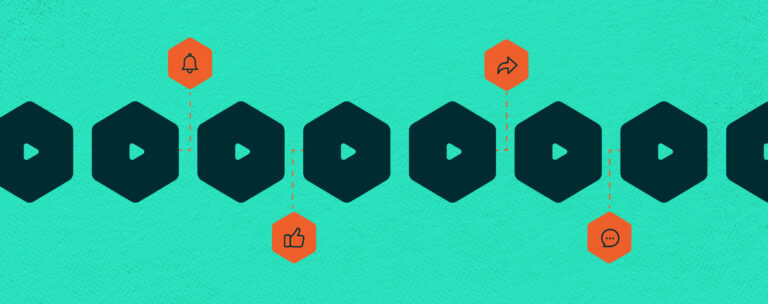The only good thing about data silos is that they mean your business has grown.
As companies scale, systems snowball. Employees buy their favorite SaaS apps. Managers maintain their own spreadsheets. Department teams build their own processes. And as time goes on, disconnection ensues. Mistrust and miscommunication flare. Efficiency tanks.
For the final installment of our 5-part series on Revenue Operations and HubSpot, let’s talk about how to bring all the Hubs together to power a true RevOps transformation.
What Is the HubSpot Operations Hub?
The Operations Hub is catered to RevOps team but you don’t have to have the word “Operations” in your title to use it.
In HubSpot’s words, Operation Hub is “Operations software that lets you easily sync, clean, and curate customer data, and automate business processes. Your entire team will stay aligned with a clean, connected source of truth for customer data, and your business will be empowered to adapt to the ever-changing needs of your customers.”
Benefits of the Operations Hub
Traditional integrations sync data in one direction. For example, you might sync contacts from your CRM to your email platform, but not the other way around. Integrations powered by data sync work two ways, passing information to and from any system. Not just current data but also historical data. All without a single line of code. Here are some other benefits of Operations Hub:
- Align all of your tools, systems, and processes in HubSpot as your single source of truth.
- Migrate all your data to the HubSpot CRM and back to other tools in a simple and consistent way.
- Clean up any formatting inconsistencies within your current data.
- Automate more custom business processes as you scale.
Main Features of the Sales Hub
Data Sync
Not only can you sync data two ways with Operations Hub but data sync integrations are also customizable: you can limit which information passes back and forth between apps, and update your choices at any time. You don’t even have to set up a workflow automation with trigger events, the data just syncs automatically.
Data Cleansing and Quality Control
We know how it goes. One employee enters data with the caps lock on (NO NEED TO SHOUT) and one doesn’t believe in capitalization. With Operations Hub, you can format data and keep data entry errors from impacting product or service quality.
Programmable Automation
Keep your team efficient and customers happy with code custom automation actions for every business process—lead rotation, territory management, renewals, and more.
Data Curation and Custom Properties
With datasets, you can curate data into clean and reusable tables that can then be used by downstream users to create reports. This saves time and gives you more control over data, while giving downstream business users faster, easier, and more consistent insights.
How the Operations Hub Unifies the HubSpot Ecosystem
Each hub in the HubSpot suite has the potential to transform your business but Operations Hub can supercharge that ability by making your data as clean and curated as possible.
Your sales team can access and visualize data in a way that’s meaningful to them while your service team can access the same data differently. Use automation templates and report dashboards to sync your teams without code or extensive training.
Leverage the Power of the HubSpot Operations Hub With CSTMR
While HubSpot’s tools are some of the most intuitive and customizable that I’ve ever used, sometimes just the naming and UX can have a learning curve. It helps to have a seasoned partner, an extension of your team, to help you get set-up and strategically move through the implementation phase. Book a call with Rory, our CEO, and he’ll walk you through our HubSpot automation and operations services.



